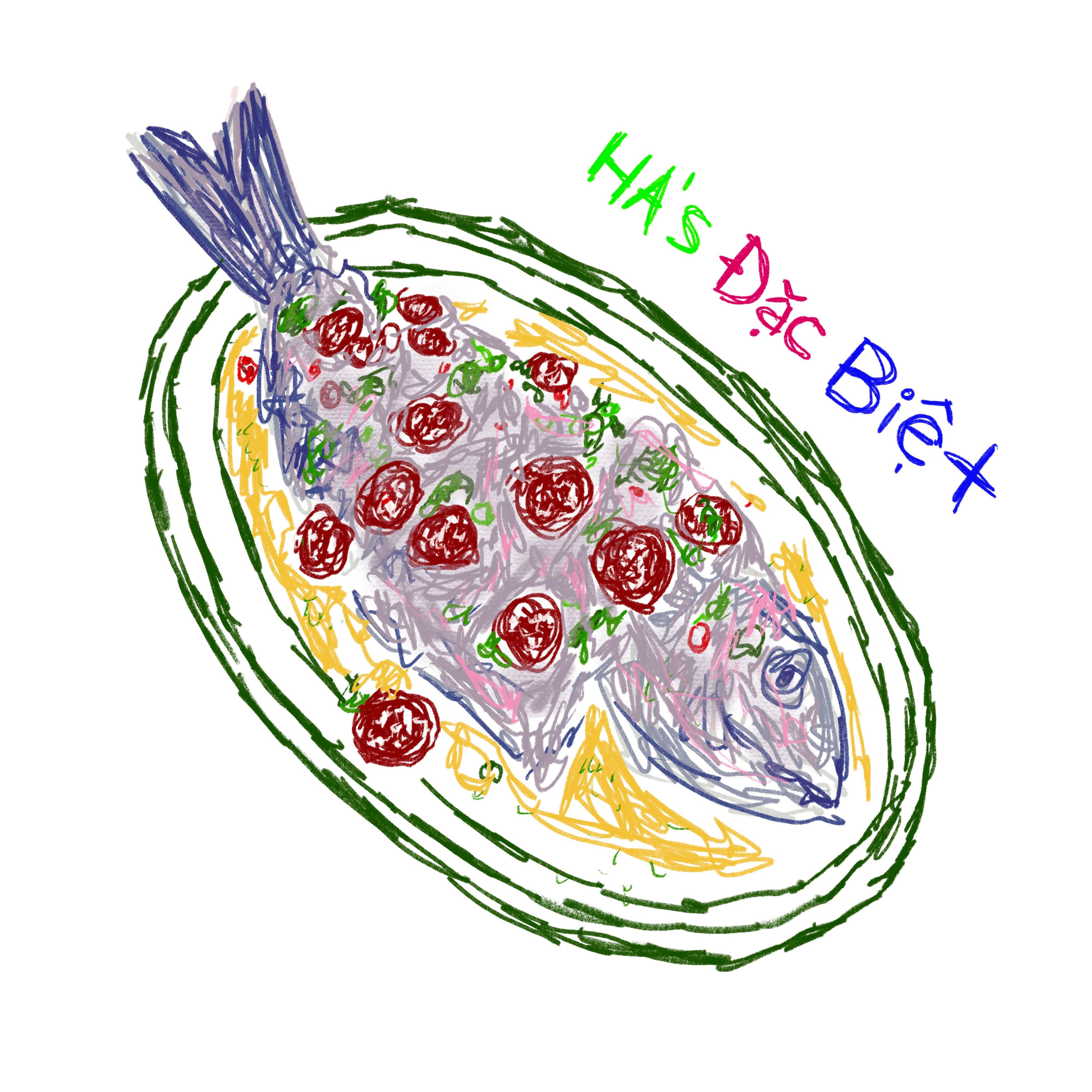
New York’s Latest Wave of Pop-Up Restaurants
In August 2022, outside the now-shuttered sushi restaurant Time on Canal Street, a crowd of New Yorkers spilled onto the street at midnight, preoccupied by drinks and run-ins with acquaintances while waiting for one of Shyan Zakeri’s famous burgers. Since its launch in February 2021, his pop-up Shy’s Burgers, built on word-of-mouth and a strong network of friends, had established a fan base that warranted this type of scene. That devotion has been a recurring feature ever since and it seemed at times like the party would never end. What started as a pop-up between two friends catapulted Zakeri into the New York restaurant scene and that demand hasn’t waned, yet he paints a different picture. “I don’t know how viable pop-ups are because I don’t think there’re any more pop-ups who are bursting,” he says. “It’s a tricky field to get into because there’s no way to make a career out of it unless you open a restaurant.”
Throughout the 2010s, pop-ups gained critical and cultural prominence as diners sought out unique food experiences, but they hit a high point over the last three years as an important response to the pandemic. Not only did they enable chefs and cooks to supplement their income, offer financial relief, and allow creative freedom to experiment with dishes, environments, and business models; they also introduced them to consumers desperate for convivial experiences. At the same time, work culture across a number of industries also changed, as workers rearranged their priorities and took advantage of new models that emphasized flexibility. The restaurant industry was due for a change too. It is famously difficult for workers, who have to deal with everything from high-pressure kitchens to demanding customers and restaurant owners alike to challenging manual labor—all for relatively low pay and little flexibility. As new pop-ups emerged, they not only showcased the talents of creative chefs but enabled them to control the environment and the culture for both their workers and their diners. These enterprises challenged the traditional models; chefs came from different backgrounds, cooks had flexibility and additional income, and there was an air of excitement that made each offering feel eventful. While pop-ups are still thriving in 2024, those behind many of the most popular ones are beginning to create a new shift in the restaurant industry.
Ha’s Đặc Biệt founders Sadie Mae Burns and Anthony Ha are experiencing the same sort of fatigue after years of operating their pop-up in different kitchens, though they have come to thrive on the logistical hurdles that are required to replicate their acclaimed Vietnamese dishes around the world. “Our menu changes every time,” says Burns in a joint interview. “Sometimes if we’re doing something for a week, it’ll change three times during that week. We’re always tweaking and we have to adapt a little bit to each kitchen and space that we’re in. There’s no pantry, so you’re starting from scratch every single time.”
It took years of doing pop-ups and surviving last-minute near-disasters to learn to handle the intensity that kind of workflow brings, but it’s paid off: The element of unpredictability adds excitement and anticipation for guests, while none of their previous workplaces have given industry veterans Burns and Ha exposure like their new project. “Pop-ups are so useful for so many reasons and I think we see a lot of young cooks who currently have restaurant jobs going off and doing their own pop-ups,” says Burns. “I think in that way it allows you to be really creative and find your own voice.”
Still, the pair don’t seem to think of Ha’s Đặc Biệt as a pop-up anymore; the current model is more like event catering and if they don’t continue that route, the next step is brick-and-mortar, leading on from a space they worked in on the Lower East Side for five months in 2022. “I like building a team and at Forsyth, that was amazing,” Burns recalls. “We had a consistent staff working with us. We were able to create a space that felt like ours, truly ours. We’ve got all these plates and glasses and the whole thing was just our vision. It was completely chaotic and very scrappy, but it was a little taste of our vision.”
Otherwise, they’re limited to only showing off their food, which has gotten them this far, but there’s a whole Ha’s Đặc Biệt world to explore—from staffing to plateware to the music they would curate. In spite of their success, it is only natural that those tradeoffs would begin to lose their appeal. “Ultimately I don’t think pop-ups in the way that we’re doing them are sustainable or are the right fit for us because at a certain point you have to hinder yourself,” says Burns. “We have felt hindered creatively because you have to just kind of go with the surefire thing in a lot of cases. You don’t have a lot of room for experimentation.”

The current state of pop-ups looks a little different than it did even a year ago. Chefs that have been using the model since the pandemic are feeling the effects of the instability and workload that come with constant change. When Zoë Kanan launched her doughnut-focused pop-up Zoë’s Doughies in 2021, it was the right time for her to break out on her own. She had been working in New York restaurants since she was nineteen, amassing a decade of skills under Major Food Group, Altamarea Group, Happy Cooking Hospitality, and more. When the pandemic hit, she was at a point in her career to experiment, consulting on projects that gave her more creative freedom and launching her pop-up, which paved the way for even more opportunities for collaboration and experimentation. “The pop-ups for me were kind of a big confidence building exercise where I, for the first time, was able to ideate an output from beginning to end and see the success that I could have doing that without the structure of someone else’s vision and really take control,” she explains.
But with enough distance from the creative excitement that followed the pandemic and a precarious economy casting its shadow over labor, Kanan is feeling what many others are right now. She’s currently working on opening a permanent bakery in Manhattan with partners. “After working for over ten years in really structured situations, the flexibility was amazing and being able to travel, being able to work with so many different people,” she says. “But what ultimately led to my decision to pursue a brick-and-mortar business was a yearning for stability again.”
As someone who sought to work in women-led spaces and was at the point in her career where she was prioritizing cultural alignment rather than prestige in the sense of fine dining, Zoë’s Doughies was a way for Kanan to make that a reality. But as a mostly one-woman operation, it required intense labor—literally the physical costs of constantly preparing, setting up, and moving around. A brick-and-mortar will give Kanan the chance to focus her operations. “One of the challenges of pop-ups is always working around other people who are just trying to do their job, basically, and you’re infiltrating. So that will be a huge relief,” she says. “Being able to work with people who I feel aligned with in terms of our mentality and our vision for the space, and to have their support is really exciting to me.” Opening her own establishment will also present an opportunity to demonstrate what she hopes will be a healthier way of working. “I’m going into this just trying to establish what kind of environment we want to create,” she adds. “I do have ten years of experience working in a lot of different places and thinking about what our virtues are but not necessarily using them as a marketing tactic.”

Zakeri’s experience is, comparatively, an anomaly. The menu at Shy’s Burgers is defined by a set item, but, more importantly, he doesn’t rely on restaurant kitchens and operates on the street instead. Unlike other pop-ups, there’s room for people who aren’t eating and his often feel like block parties. It’s also why a rotation of cooks return when Zakeri calls. “The people I work with all are service people or cooks, so they can do it on an off day. They make a little more money and it doesn’t take the entire day. Or if it does, they get paid a lot,” he says. “They can do it at night and they can just leave for the most part, hang out after; a lot of their friends are already there.”
That type of community building is what has elevated Shy’s Burgers into such a successful pop-up, which makes the source of Zakeri’s burnout all the more ironic. “I’m alone. I do this by myself for the most part, hiring people at hand for events a day or a few hours before,” he explains. “But it’s a very lonely business; people have partners to build things with.” Shy’s Burgers started out that way, when Zakeri and his friend Alex David decided to cook burgers and posted about it to his Close Friends on Instagram during the pandemic, but in October 2021 David moved back to Los Angeles. “When Alex left,” Zakeri explains, “I was like, ‘Do I want to do this or make it my full-time job?’ It was like, ‘Okay, I’m on my own. I have this thing, let’s take it as far as it can go.’ I had kind of a big year and at the end of the year it was like, ‘Okay, where is this leading?’ And it was brick-and-mortar…or stop.”
Despite the difficulties these entrepreneurs and many others are facing, it isn’t quite a death knell for pop-ups yet. They have been a microcosm of what industry workers and diners are seeking. By undercutting traditional restaurant models, they have provided a template for the evolving culture of restaurants. “Food and restaurants have changed even from when I started cooking ten years ago because now I think when you work in a restaurant, it doesn’t necessarily mean that you want that as a career,” says Burns. “Food is more just a part of the general conversation and it’s so much more tied into art and fashion and all these other subsets. You see so many different kinds of people now cooking.” Pop-ups open the door for cooks and chefs who can now see what it looks like when food is about the experience and the community, without the intensity or formality dictated by “fine dining.” “I think that is something that is of value to a lot of people who are entering the industry or who are in industry today, is wanting to be culturally aligned, spiritually aligned with the place you’re working for,” Kanan emphasizes. The next wave of chefs aren’t so tethered to the old models and the path into the restaurant industry is more open than ever before. They may all end up with brick-and-mortar, but even if the model isn’t entirely new, there’s a new culture that retains the pop-up spirit.
Read this story and many more in print by ordering our seventh issue here.
As a nonprofit arts and culture publication dedicated to educating, inspiring, and uplifting creatives, Cero Magazine depends on your donations to create stories like these. Please support our work here.






